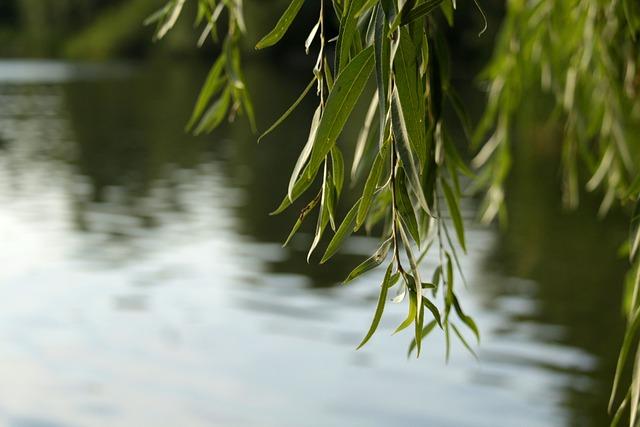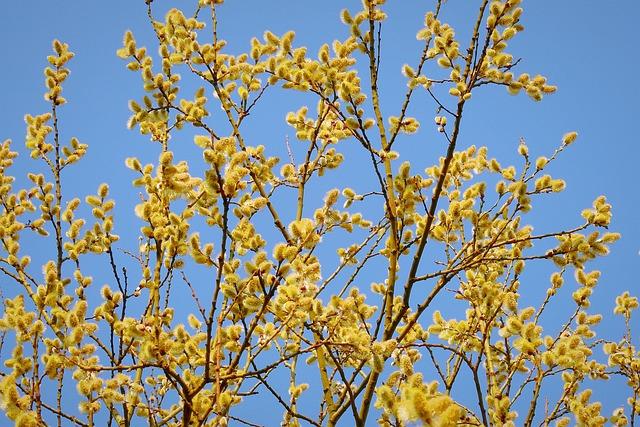- Introduction
- Types of Willow Trees
- Uses of Willow in Medicine
- Environmental Significance of Willow
- Growing Conditions for Willow Trees
- Conclusion
- FAQs
- References
Introduction
Willows, a group of trees and shrubs belonging to the genus *Salix*, are well-known for their flexible branches and the habitats they nurture. This blog article will delve into various aspects related to these majestic trees, including their types, medicinal uses, environmental importance, and required growing conditions. Willows have been revered for centuries due to their role in both nature and traditional practices.
This article aims to explore each of these elements in depth while providing a solid understanding of how valuable the willow is to our ecosystem, medicine, and cultivation practices. Let’s get started by taking a closer look at the different types of willow available globally.
Types of Willow Trees

(Image: Pixabay/@iira116)
The *Salix* genus includes around 400 species divided into trees, shrubs, and low-growing herbaceous plants. Each species varies in size, form, and habitat preferences, making them significantly diverse across climates and ecosystems.
1. **Weeping Willow (*Salix babylonica*)** - One of the most iconic willow species, recognized by its drooping branches that cascade toward the ground. This species thrives near water bodies, making it a popular choice for gardens, parks, and landscapes.
2. **Pussy Willow (*Salix discolor*)** - Known for its soft, furry catkins that appear in early spring, this small species is widely distributed in North America and Europe. Pussy willow branches are often cut and used in floral arrangements.
3. **White Willow (*Salix alba*)** - Native to Europe and Asia, the white willow gets its name from its silver-white leaves. Historically, the bark of this tree was one of the first natural sources of salicylic acid, which later led to the development of modern aspirin.
These are just a few examples among hundreds of willow varieties. Each type shares adaptability to wet regions, but some can thrive in drier areas as well.
Uses of Willow in Medicine

(Image: Pixabay/@Pexels)
Willow trees are more than just beautiful scenery – they have played an essential role in medicinal practices for thousands of years. One of the most common therapeutic uses comes from willow bark, which possesses salicin, the active ingredient responsible for pain relief.
In traditional medicine, willow bark has been known to reduce inflammation, treat headaches, and alleviate fever. Native Americans and ancient Europeans used it for its pain-relieving properties long before scientific research supported these claims.
Modern aspirin, developed in the late 19th century, was synthesized based on the chemical compounds found naturally in willow bark. Though synthetic aspirin has largely replaced willow for medicinal use today, some herbalists continue to advocate for the use of natural willow bark supplements.
Environmental Significance of Willow

(Image: Pixabay/@FoYu)
Willows hold tremendous ecological importance, particularly in their role in riparian zones – areas adjacent to rivers, streams, and wetlands. The strong root systems of willows help reduce soil erosion along water banks, stabilizing the surrounding area and preventing sediment washout.
Moreover, willow trees provide critical habitat for many species of wildlife, including birds, insects, amphibians, and small mammals. Their ability to grow rapidly, even in nutrient-poor soils, makes them invaluable for restoring damaged ecosystems, especially after floods or landslides. Willows are also excellent carbon sinks, absorbing CO2 from the atmosphere during photosynthesis.
Their fast growth and adaptability are the reason many environmental restoration projects use willows in reforestation and wetland conservation efforts. Some studies even suggest that willows could play a key role in combating climate change by sequestering large amounts of carbon dioxide.
Growing Conditions for Willow Trees

(Image: Pixabay/@VanFulpen)
Growing willow trees requires understanding their natural preferences. These plants are typically found in moist areas near bodies of water, although some species exhibit drought tolerance. If you plan to cultivate willow on your property or landscape, it's important to make sure you offer adequate moisture levels combined with well-drained soil.
Willows prefer full sunlight and can tolerate a range of soil types but perform best in loamy or sandy soil. They grow rapidly, often reaching maturity within a few years, making them ideal for those seeking quick landscape effects. On average, weeping willows and other large species grow 3 to 8 feet per year when conditions are right.
When planting a willow tree, ensure it has sufficient space to spread out since larger species like the weeping willow can spread their canopy up to 30-40 feet wide. Pruning is necessary for maintaining shape and size, depending on the variety grown.
Conclusion
The willow tree remains one of nature's most versatile symbols of resilience and beauty. From its array of stunning species to its practical roles in medicine and the environment, the significance of willow cannot be overstated. Whether utilized for soil retention, wildlife habitats, or therapeutic remedies, willows offer a broad range of benefits to ecosystems and human health alike. As we continue to learn more about these remarkable plants, it’s clear that they still have plenty to contribute to our world.
FAQs
What are the main uses of willow bark today?
Today, willow bark is used mainly for its anti-inflammatory properties. While aspirin has mostly replaced its use in mainstream medicine, some people still use it in its natural form as a pain reliever for headaches, muscle pain, or arthritis.
Can willow trees grow in arid regions?
While willows prefer more humid environments, certain species exhibit significant drought tolerance. However, for optimal growth, it is advisable to plant them near a good water source, such as ponds, lakes, or rivers.
How fast do willow trees grow?
A large species like the weeping willow can grow between 3 to 8 feet per year under optimal conditions. Their rapid growth rate makes them popular for landscaping and restoration efforts.
Are all willow species suitable for medicinal purposes?
No, not all willow species are equal when it comes to medicinal properties. Primarily, the white willow tree's bark contains the highest levels of salicin, which is effective for pain relief and reducing inflammation. Always consult professional advice before using any plant medicinally.
Do willow trees attract wildlife?
Yes, willow trees provide crucial habitat for various birds, insects, amphibians, and mammals. Their foliage offers food, shade, and shelter, while the root systems promote healthy aquatic ecosystems by stabilizing riverbanks.

